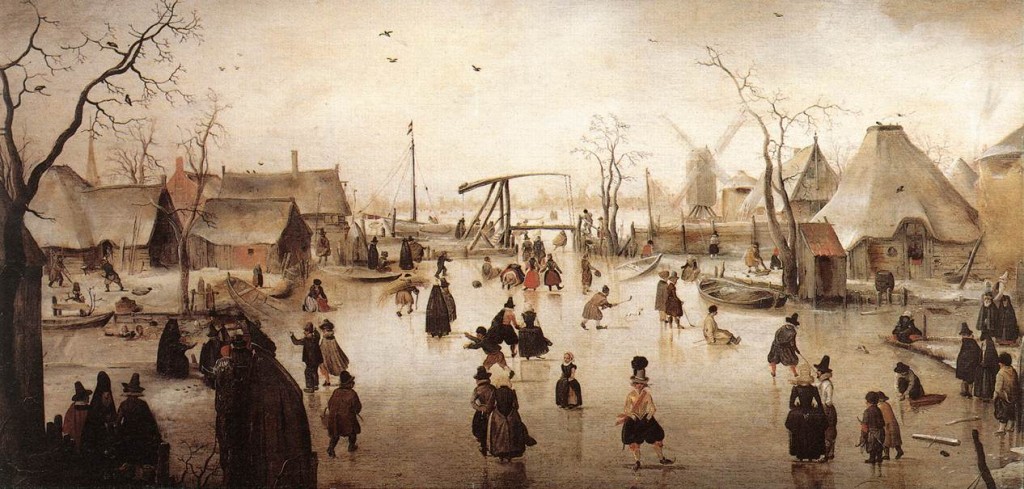Hendrick Avercamp
July 4, 2010
THE DUTCH painter Hendrick Avercamp depicted captivating winter scenes of skaters on the frozen canals and waterways of 17th Century Netherlands. Falling into the same tradition of Flemish landscape painting begun by Bruegel, he created paintings filled with bright color, brooding skies, and tiny human vignettes. A small exhibit of his work is on display at the National Gallery of Art in Washington, D.C. During a visit to the museum yesterday, I was enthralled by these evocative works with their miniature episodes on ice.
Avercamp (1585-1634) lived and worked in the small port city of Kampen on the Zuider Zee during the period known by meteorologists as the Little Ice Age, when the winters were cold enough to freeze rivers and canals. Bruegel was the first to paint winter landscapes, but Avercamp is considered to be the first to specialize in the genre. Little is known about the painter’s life, but he was possibly mute and deaf, which may account for his striking attention to detail. The paintings seem to contain every variety of gesture and pose, and they depict the full range of social types, from peasants to burghers to aristocrats, all skating, conversing or working on the ice. Up close, one sees a woman overturned in a fall, her skirts askew; a poor peasant carting a wooden box; elegantly dressed figures in black gowns and masks to keep off the cold; a washerwoman working alongside a hole in the ice; fishermen and workers hauling peat; and men playing the ice game of colf, which was a precursor of golf. Skates were metal blades, curling at the end, which were attached to shoes.
Avercamp took for his inspiration an entire subculture on ice. As explained in the museum brochure:
During winter months when barges, boats, carriages, and wagons might all be rendered useless, the Dutch resorted to ingenious ways of navigating frozen waterways in a country marked by hundreds of canals and rivers. along the Ice lines of sleighs and skaters create a visual pathway toward the city in the distance. To sell refreshments to the crowds, vendors set up tents. Horsesshod with special shoes pulled the sleighs — some were utilitarian, but others were elegant and colorful, with gilding, ornate carving, and expensive harnesses. Their passengers traveled in comfort and style, while the poor might not own a pair of skates. Sleds of all types carted children, goods, and animals; single passengers could push themselves with poles… The Dutch even invented a yacht that could sail across the ice, propelled by the wind.
The Dutch had taken up skating as early as the Middle Ages. The earliest skates were carved out of the bones of animals (including deer), but in the fifteenth century long metal blades were strapped onto shoes. Demand for skates was so high in the Netherlands that creating them became an art in itself, with more expensive versions given ornamental flourishes such as blades that scrolled up; in Amsterdam artisans even formed their own skate-makers guild. Visitors from other countries were amazed at how adept — and quick — the Dutch were on their skates. They seemed fearless, often carrying poles to help them get out of the water in case they broke through the ice — an occurrence, not infrequent, that Avercamp depicted.




